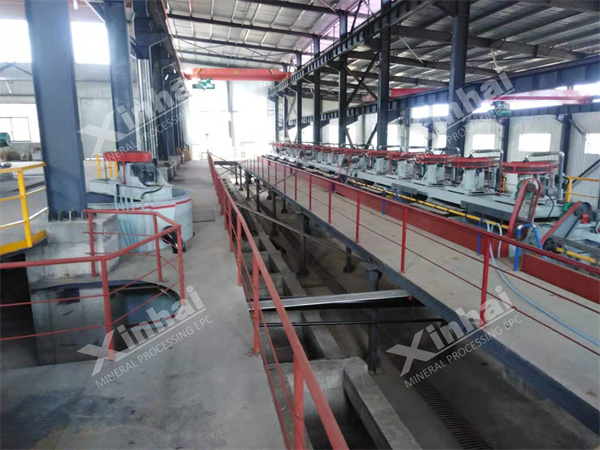The fine mud part of molybdenum tailings has always been a difficult part to recover in the beneficiation process due to its small particle size and complex composition. However, with the advancement of technology and the increasing awareness of resource reuse, the molybdenum recovery technology in fine mud has gradually matured, providing the possibility to improve the utilization rate of molybdenum resources. This article will delve into the efficient recovery technology of molybdenum from molybdenum tailings fine mud, providing guidance for the mineral processing industry from a professional perspective.
Characteristics and recycling challenges of molybdenum tailings fine mud
Molybdenum tailings fine mud usually refers to small particles that have been classified, with a particle size of less than 38 microns and a moisture content of over 80%. Due to its high moisture content and fine particle size, traditional mineral processing methods are difficult to effectively recover molybdenum from it. In addition, the multiple mineral components in the fine mud also increase the complexity of molybdenum recovery.
Application of Concentration and Dehydration Technology in Fine Mud Treatment
In the face of high moisture fine mud, the first step is to carry out concentration and dehydration treatment. By using a concentrator, the principle of gravity can be utilized to settle the moisture in the fine mud, thereby increasing the concentration of the material. Subsequently, the use of dewatering screens can further separate the moisture in the fine mud, laying the foundation for subsequent beneficiation operations.

The key role of flotation technology in molybdenum recovery
The dehydrated fine mud needs to be enriched with molybdenum through flotation technology. It is crucial to choose appropriate collectors and adjusters during the flotation process, as they can significantly improve the flotation efficiency of molybdenum minerals. In addition, by optimizing the flotation process, such as adjusting flotation time and aeration volume, the recovery rate of molybdenum can be further improved.
The auxiliary role of reselection technology in the recovery of fine mud molybdenum
Although the particle size of fine mud is relatively fine, re-election technology can still play a role in the pre enrichment stage. Gravity selection equipment such as shaking tables and spiral chutes, utilizing the layering principle and motion characteristics of materials, can help achieve preliminary separation and enrichment of molybdenum minerals.
Application of chemical treatment technology in situations where physical recovery is difficult
For molybdenum that is difficult to recover through physical methods, chemical treatment technology provides another solution. Molybdenum can be extracted from fine mud through chemical methods such as leaching and precipitation, achieving further resource recovery.
The Importance of Combined Process in Improving Molybdenum Recovery Rate
In practical applications, a single mineral processing technology often fails to meet the demand for efficient recovery. Therefore, adopting a combined process, which combines various technologies such as concentration dehydration, flotation, re-election, and chemical treatment, can significantly improve the recovery rate of molybdenum. This comprehensive utilization of various technologies not only addresses the complexity of fine mud, but also maximizes the utilization of resources.
Case Analysis of Molybdenum Recovery from Molybdenum Tailings Fine Mud
Taking the actual case of a certain beneficiation plant as an example, the plant first concentrates and dehydrates the fine mud to reduce its moisture content, then enriches molybdenum minerals through flotation technology, and further purifies them through gravity separation equipment such as shaking tables. For parts that are difficult to physically recover, chemical leaching and precipitation techniques were used for treatment, ultimately achieving efficient recovery of molybdenum.
The efficient recovery of molybdenum from molybdenum tailings fine mud is a comprehensive project that requires the comprehensive use of multiple beneficiation technologies. By continuously optimizing the process flow and selecting appropriate technology combinations, the recovery rate of molybdenum can be effectively improved, achieving greater utilization of resources. With the continuous advancement of technology, more efficient and environmentally friendly molybdenum recovery technologies will emerge in the future, bringing new development opportunities to the mineral processing industry.